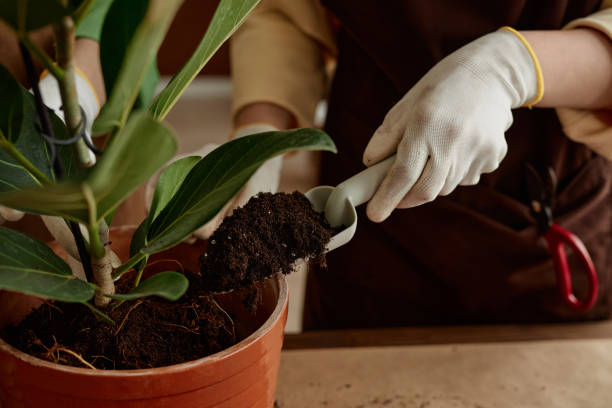
Indoor plants are a type of plant that can grow indoors; these include different tropical plants that are suitable for the internal environment. These are used for the interior design in homes and offices for their aesthetic appeal, as the greenery brightens up the indoor spaces and has a quality that boosts the mood of a person. They are popular because they are easy to take care of and used in different themes of indoor decor. These plants are adapted to grow indoors as they require minimal light, warm temperatures, and dry conditions.
The concept of indoor plants seems to be appealing, and it is assumed that these are easy to grow and take care of, but these plants come with their own challenges and obstacles, and these disadvantages are discussed in detail below.
Not all indoor plants require low maintenance, but some require proper care on a regular basis. These involve regularly watering these plants, proper lighting, trimming, and, after some time, repotting. If the proper amount of care is not provided to the plants, they may die or weaken over time.
The indoor plants are prone to pests like fungus, mosquitoes, and spider mites, and these things harm the plants and also cause irritation in the indoor environment. The overwatering and poor drainage of water lead to the growth of fungus and pests in the soil that spread allergies and impact the indoor quality of the air.
The variety of indoor plants is not friendly for the pets and can be extremely dangerous for them. If pets by chance ingest the leaves and other parts of plants, these cannot be easily digested and have a negative impact on their health. It is essential for the person who has pets to check whether the plants are poisonous to their pets or not.
Some people are allergic to certain plant species, mould, and pollen grains that are present in soil. If people unknowingly place the indoor plants, then a different allergic reaction, like sneezing, irritation of the skin, and respiratory problems like asthma, can be faced. That is why the indoor plants that are hypoallergenic should be used, and make sure that the ventilation is proper.
The indoor plants require a stable environment, including lighting, temperature, humidity, space, and water and fulfilling these environmental needs of indoor plants altogether is difficult for people. If these needs are not addressed, then it becomes difficult for the plant to grow.
The indoor plants are costly, as the cost of purchasing soil, pots, and care tools is high, and the cost is also dependent on the variety of plants. Taking care of their environment, like stable lights, essential nutrients, and grooming of the plant, is also very costly.
The plants that are large require a large space, which can crowd the small rooms. Some species require direct light that is not usually available indoors. Selecting the wrong plant for an environment can result in poor growth of the plant.
The different species of indoor plants have different requirements that allow these plants to grow. They need more protection than an outdoor plant, as it is essential to provide the required amount of sunlight and water. The soil should be changed, and repotting is required after a certain period of time. The species of plants must be identified to provide adequate care for them. The grooming and trimming of the indoor plants should also be done when the plants have grown excessively.
In conclusion, considering the disadvantages of indoor plants can help people make informed decisions about selecting the type of indoor plant species that they can effectively take care of. It will help in creating an environment that is safe and healthy because some plant species can lead to allergies, infections, and are toxic to health. Considering the drawbacks of indoor plants, make sure that a person can select the correct plant for interior design, prevent health problems, financial loss, and promote the safety of their pets.

This post has been authored and published by one of our premium contributors, who are experts in their fields. They bring high-quality, well-researched content that adds significant value to our platform.


